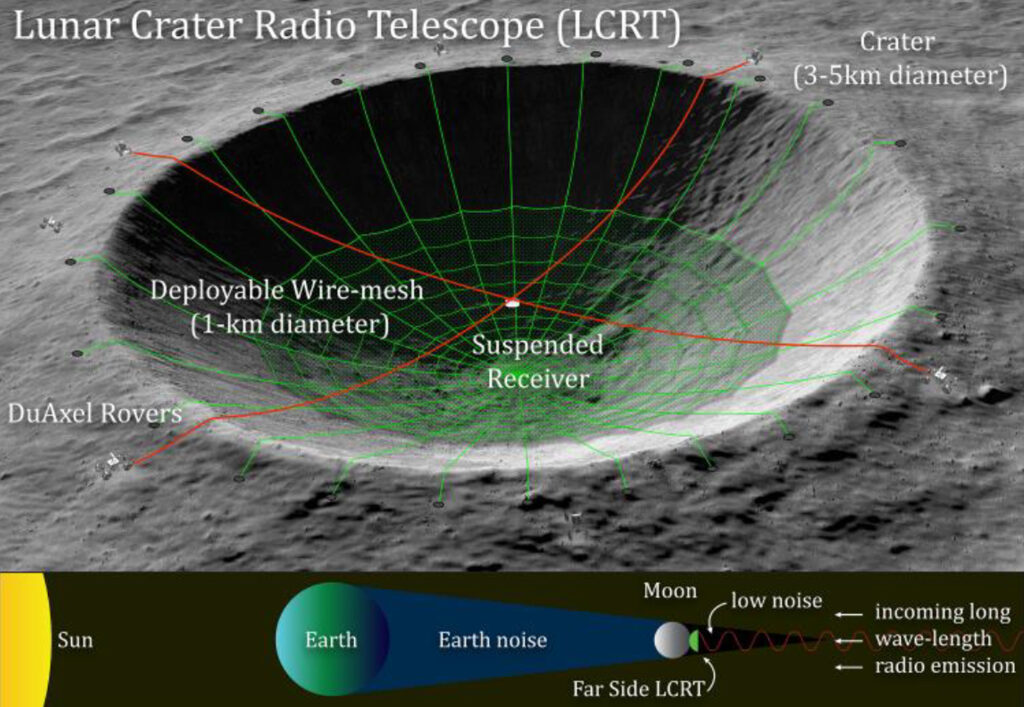There are many telescopes on Earth and in space, providing us with important information and carrying out different research projects. So why not set up one on the moon, with craters in lieu of a telescope dish?

The space agency gave a new round of grants for its favorite innovative space projects and one is a plan to fit a 1 kilometer (3,281 foot) radio telescope inside a crater on the far side of the Moon.
The moon telescope project is one of 23 concepts that received part of a $7 million investment. The Phase I award consists of $125,000 to fund a nine-month study of the idea. Other concepts include investigating solar sails, lunar landing pads, and a robotic explorer for Saturn’s moon Enceladus.
NASA pointed out that these projects will mostly require a decade or more of technology development, and that they are not official NASA missions. These fascinating ideas are worthy of deeper investigation, though, and could one day move from concept to reality.
The Lunar Crater Radio Telescope (LCRT) would be able to measure wavelengths and frequencies that can’t be detected from Earth, working unobstructed by the ionosphere or the various other bits of radio noise surrounding our planet.
“LCRT could enable tremendous scientific discoveries in the field of cosmology by observing the early universe in the 10–50m wavelength band (6–30MHz frequency band), which has not been explored by humans to date,” writes robotics technologist Saptarshi Bandyopadhyay, who pitched the proposal.
Bandyopadhyay’s proposal lists the benefits of locating a telescope on the far side of the moon, including that “the moon acts as a physical shield that isolates the lunar-surface telescope from radio interferences/noises from Earth-based sources, ionosphere, Earth-orbiting satellites, and sun’s radio-noise during the lunar night.”
According to the proposal, moon rovers would pull out a wire mesh some 1 kilometer across, inside a lunar crater than could be up to 5 kilometers (3.1 miles) in diameter. A suspended receiver in the center of the crater would complete the system.
Everything could be automated without any human operators, which would, in turn, mean a lighter and less expensive payload for the project to literally get off the ground. But this is still at the very early stage of planning, and it’s not clear yet exactly which crater would be used for the job.
“Building the largest filled-aperture radio telescope in the Solar System on the far side of the Moon is bound to create a lot of public excitement,” Bandyopadhyay and his colleagues write in a 2018 paper on the idea. “This concept would unlock the potential for ground-breaking scientific discoveries in radio astronomy.”









